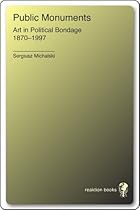

This book provides a fresh; engaging view into Picassorsquo;s life and art. Mary Ann Caws describes the artistrsquo;s life thematically and chronologically; and also takes as focal points Picassorsquo;s relationships with his close friends as they changed over the years.Pablo Picasso invokes central places and characters in various periods of the artistrsquo;s long and active life: in Barcelona; his time at the Bacirc;teau-Lavoir in Paris; his work and life in Provence; his friendships with Gertrude Stein; Max Jacob; Apollinaire and Pierre Reverdy; Jean Cocteau; Breton and the surrealists; and later Daliacute;; Eluard; and critic Roland Penrose. It traces his relationships with partners Dora Maar; Franccedil;oise Gilot and Jacqueline Roque. Caws provides biographical context to the artistrsquo;s work; focusing on the time around Les Demoiselles drsquo;Avignon and then Guernica; as well as the changes and consistencies in his oeuvre over the twentieth century.Throughout; the author examines Picassorsquo;s juggling of viewpoints; artistic strategies; loves and friends; which she interprets as part of the expansion of the artistrsquo;s genius and personality; represented by the figures of the Harlequin; the clown and the acrobat.This book is a concise and lively study of the enormously productive and varied life and art of one of the twentieth centuryrsquo;s most influential artistic figures.
#2654349 in eBooks 2013-03-28 2013-03-28File Name: B00C2PIME2
Review
5 of 5 people found the following review helpful. Not the book it could have been...By Marti A.The approach this book takes to instruction is thorough; but in significant places; also needlessly complicated. I mean this chiefly in terms of the example melodies that are given throughout the book. They are almost never straightforward. They are almost always syncopated. They very often begin on re or la or some other note that is not stable within the key; and end on these notes; as well. Perhaps this is an attempt to make them more interesting; but usually they are not. They simply strain some of your inner hearing resources and thereby make it harder to concentrate on the pedagogical point at hand. Also; in the section on developing melodies; examples are given of retrograde and inverted melodies that are in fact not the inversion or retrogression of the original. I understand an effort is probably being made to keep things more interesting. But what the reader needs is a straightforward presentation that sets the point at hand into sharp relief.The book is comprehensive and could be superior for a lot of people to more classic texts for music majors such as Tonal Harmony. But these flaws seriously compromise its value. Too bad.0 of 0 people found the following review helpful. Very good.By James CrueI like this book. It satisfies an important aspect of music theory education. This is not your standard (all too common) general; basic music theory education. It is more intermediate than that. The reader should already have a fairly good understanding of music theory to go through this book.This occupies an interesting niche in music theory education.0 of 0 people found the following review helpful. I learned a ton about songwriting and composition from this.By JerbearThis is one of my favorite books. I learned a ton about songwriting and composition from this. Theres a lot of info about music theory in here too. I love how he gives you real examples of everything he is talking about and relates it back to lyrics and arrangement. A must read for any songwriter.